“Maybe it’s time to cut my hair?” I say to myself while I stare at my bushy hair in the mirror. I’d had enough of it. All the detangling, the styling and the very expensive products were exhausting for me and my wallet.
I have thick, type 3b curly hair (Learn more about hair types here). It can be a handful, but at least it’s healthy, right? But the truth is I get really tired of having to wash my hair, then deep condition and then style it with so many products. The process is too much, and my decision to try and take care of my natural hair has been a good learning experience, but I’ve had enough.
Trying to take care of your natural hair can be a real chore. First, you have to figure out what type of hair you have, then determine which products would best suit your hair type. From there, you have to style it and so it goes on and on. It never ends!
I am here to tell you that I feel your pain if you’ve ever experienced this, and that it is okay to straighten your hair. It is your hair, after all. For instance, last week, I straightened my hair, and it felt good. I still try and take care of my hair as best as I can despite straightening it. I wash, deep condition and use a heat protectant. I know this may not be enough to protect my hair, but somehow, I’m okay with that. I feel like I have so much more time to do things and I don’t have to constantly worry that I have to style my hair every time I go out. All I have to do is quickly comb out my hair and it falls into place. It’s my hair and I shouldn’t be judged for how I wear my hair right?
The cost of natural hair
In South Africa, there are hundreds of products made especially for natural hair, so there is a fair share that you can pick from. However, the really good products are very expensive, starting from prices around R250 and up for one single product.
Popular brands include Aunt Jackie’s, Cantu, Mielle, InstrinsiCurly Me (South African brand), Palmers, My Natural (South African brand) and many more.
Besides the actual products needed for your hair the added cost is a detangling brush, a microfiber towel and cute hair accessories.
Although time doesn’t cost money, it is something that you cannot get back, and taking care of your natural hair can take up many hours!
Politics of natural hair
There are various natural hair communities and movements; some saying you should never straighten your hair, some saying white women can’t have curly hair, some saying that you should never relax it or that you should give your hair a break by styling it with braids or wigs, and the list goes on.
The politics of natural hair goes even deeper when some groups start nit-picking about how someone’s hair is just too thick or not coily enough because it may not fit into a specific curl pattern. But just because your hair doesn’t fit into a pattern, it does not mean a thing. The natural hair type chart was created as a guide, that’s it.
In South Africa, we’ve had our fair share of hair controversies. An ad by Clicks labelled women with naturally coarse and curly hair as “FRIZZY and DULL” and “DRY and DAMAGED”, while the hair of white women was labelled “NORMAL HAIR, FINE and FLAT”. There was a huge uproar, and many women swore to boycott Clicks. The ad was removed, but I suppose the stigma still remains.
We need to remember, there is no perfect type of hair. Yes, having straight hair is far easier to handle, but it doesn’t make your hair any less amazing.
Curly or straight?
Lucky for me, I’m not surrounded by people who judge me for my hair type. I’m comfortable wearing my hair curly or straight, and I certainly don’t think that people treat me differently depending on my hairstyle.
Wear your hair how you feel. If you feel like straightening it, then go for it or if you feel like wearing your hair naturally makes you feel more confident, then do that.
Do not succumb to societal pressures, just do you!
***
Tell us: What has been your personal experience with natural vs straight hair?
Read more here about the hair-free movement.



